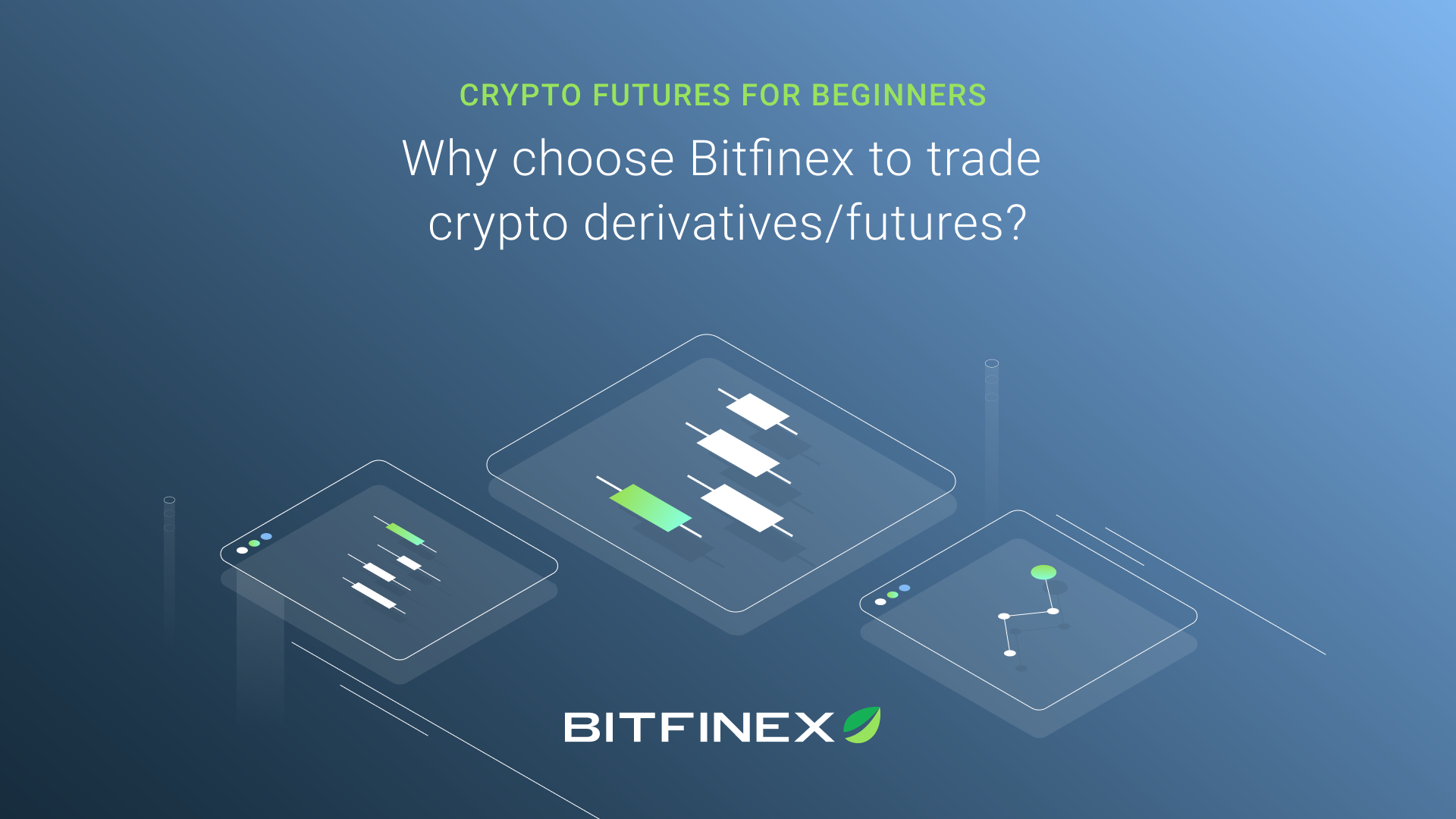
16 Dec Why choose Bitfinex to trade crypto derivatives/futures?
Derivative products have flooded the cryptocurrency market in recent years. They’ve matured from relative obscurity to claim over 50% of spot volume within the top exchanges. Moreover, the benefits crypto futures have afforded to the underlying market are significant. The increased popularity of these contracts has allowed for greater liquidity–and lower volatility– providing additional legitimacy for the industry.
Cryptocurrency derivatives trading has become a versatile and efficient way to gain exposure to digital assets. Not only do these instruments offer a safe avenue for speculation of an underlying asset, but also a capital-efficient entry whereby risk is already factored in.
Read more: Crypto Futures for Beginners: what are crypto futures and how can you get started?
The multifaceted perpetual contract
Not all crypto futures are born equal. There are many diverse examples of derivative instruments within the crypto ecosystem. Bitfinex*, for instance, offers a futures contract called a “perpetual contract.”
Much like typical crypto futures, perpetual contracts stand as an agreement between two parties to either buy or sell an asset on a pre-proposed date at a predetermined price. Similarly, leverage is an option present in both perpetual and regular futures contracts.
However, as its name would suggest, perpetual contracts have no set expiry date. This means that as long as the trader can fund the position, it may stay open continually, making a suitable investment for traders who wish to minimize the inconvenience of reopening positions.
Another key difference lies within the funding of perpetual contracts. As there is no agreed settlement date, a funding rate, or fee, exists. This fee acts as a recurrent payment made between buyers and sellers, responsible for settling the contract periodically. Typically, a positive funding rate requires contract buyers–aka long traders–to pay the contract sellers–or short traders. The opposite is true for a negative funding rate with long traders profiting from the short traders.
An additional feature of perpetual contracts is the mark price. Due to the unpredictable nature of the crypto market, the mark price is set to establish the fair value of a contract to dampen the effect of manipulation or extreme market volatility.
How does it work on Bitfinex?
This relatively new type of derivative was designed to streamline the traditional futures contract. By ditching a mandatory expiry date users are free to speculate without worrying about the more complex aspects such as opening a new position, roll yield or forward curve. Most crypto futures exchanges offer similar perpetual contracts; however, their subtle variations are what make the most difference.
To understand Bitfinex’s particular iteration of perpetual contracts, it’s essential to note the varying rules and stipulations.
Mark price calculation
As briefly explained, the mark price is essentially the ‘fair’ price of the perpetual contract. Bitfinex calculates mark price via reference to the BFX Composite Index (BFXCI). The BFXCI represents an evenly weighted index of prices from pairs traded across the Bitfinex spot market, as well as up to three separate leading exchanges inclusive of prices for the relevant token pairs.
In order to maintain fairness, Bitfinex employs an automated process made up of pre-programmed parameters, deciding which prices to include–or exclude–from the calculation. This is done to ensure the prevailing–or fairest–price is calculated. In turn, this assures against unwarranted liquidation via market manipulation or extreme volatility.
Liquidation is tied intrinsically to the mark price, determined by the BFXCI at the time the position is placed.
If the market trades at or below this Forced Liquidation Price, the position would be liquidated, and all Margin Collateral forfeited into the Liquidation Fund.
Perpetual settlements
Perhaps the most critical aspect of all is the ‘settlement’ of contracts. First and foremost, all derivative contracts on Bitfinex are settled solely in Tether (USDt).
The settlement or funding payment is made three times per day within an 8-hour period, starting and ending within the following times, 0:00, 8:00, 16:00 (UTC). This period is otherwise known as the funding period. Funds allocated from the trader’s derivative wallet balance will be used within the payment.
Whichever party receives these payments–and when they occur–is entirely based on the market conditions during the funding period. A change in market conditions is defined by the average spread–aka the difference between the mark price (as defined by the BFXCI) and derivative’s mid-price (the median of the lowest offer and the highest bid of the contract).
When is payment required, and which party pays?
When average spread falls either side of a threshold set between -0.05% and 0.05%, a funding payment is required. Long positions are obligated to pay shorts when the average spread is equal or greater than 0.05%, and short positions pay longs when the spread is equal to or a greater negative than -0.05%.
The size of the required funding payment is calculated via the value of the participant’s position and the final Mark Price. As the average spread increases beyond the -/+0.05% parameters, the funding size will also increase. This is capped at 0.25% of the trader’s position.
If either party holds insufficient funds for payment, the deficit will be extracted from that trader’s margin collateral. For that reason, there are several margin requirements based on multiple criteria:
- Order and existing position size
- The market price of the derivative
- Transaction Fees that may be charged
- The Funding Payments required
- The market conditions and volatility of both the Perpetual Contract and the derivative
Fundamental, however, margin requirements abide by an incremental increase; the larger the order, the larger the margin, and vice versa.
Why choose Bitfinex?
While there are a few crypto futures markets to pick from, Bitfinex ensures a thoroughly fair system removed from the potential of bad actors and extreme volatility. Contrary to similar offerings, Bitfinex employs specific margin requirements, such as the need for a higher initial margin for a greater position–which, in effect, deleverages traders, and minimizes liquidation risks.
Similarly, Bitfinex utilizes its automated BFX Composite Index to avoid liquidations via occurrences of market manipulation.
These days, many derivative exchanges offer 100x leverage or higher. However, some market leaders offer high leverage on BTC only. In contrast, Bitfinex allows up to 100x leverage on BTC, ETH and XAU₮ perpetual contracts.
Bitfinex additionally cites some of the lowest fees across exchange leaders, quoting a taker fee starting at just 0.0625%. This surpasses two of the leading exchanges whos fees start at 0.075%. As a benchmark some of the highest taker fees in the market range from 0.1% to 0.5%.
The sole utilization of USDt within derivatives provides a range of benefits for traders on Bitfinex. One of which is the intuitive trading experience provided by an asset similar to that used in spot trading. Another advantage lies within the stability afforded to the collateral staked.
At their core, derivative products such as perpetual contracts are providing an exciting route of investment. Their use of leverage allows speculation beyond the underlying asset, and their rolling contract affords ease of use.
*The derivatives platform is provided by iFinex Financial Technologies Limited. References to Bitfinex Derivatives in this post are references to iFinex Financial Technologies Limited.



